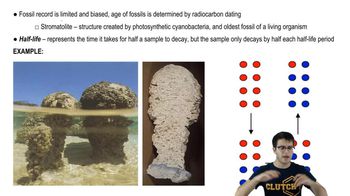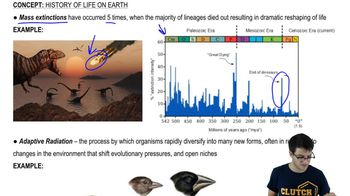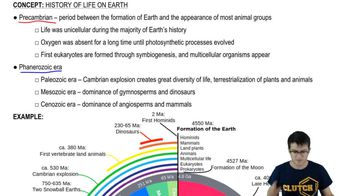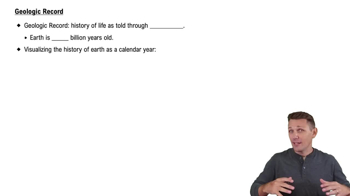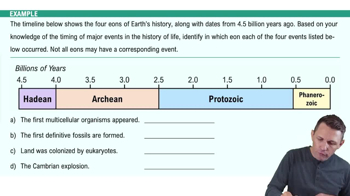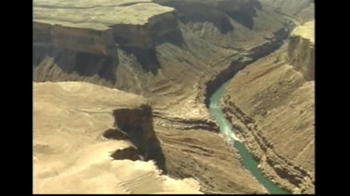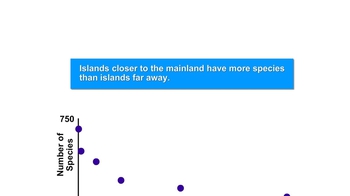Gymnosperms are seed plants that have no enclosed chambers around their seeds. Most gymnosperms are conifers -- cone-bearing trees such as the pine. The male and female parts of a conifer are found in separate locations and structures on the tree. Let's review the structures important for conifer reproduction and the sequential stages of the life cycle of a typical coniferous plant such as the pine. Microspores are formed by meiosis. Each microspore develops into a pollen grain containing a male gametophyte. A pollen cone contains hundreds of microsporangia in small reproductive leaves called sporophylls. Cells in the microsporangia undergo meiosis to form haploid microspores. Each microspore then develops into a pollen grain with tiny wings. Each pollen grain is a male gametophyte enclosed within a pollen wall. Now what do the pollen grains do? Pollination occurs when the wind carries a pollen grain to the micropyle at the base of an ovulate cone scale. A pollen tube slowly begins to grow from the pollen grain into a megasporangium. This may take more than a year. While the pollen tube is growing, let's look at what happens in the megasporangium. While the pollen tube continues to grow, the megasporocyte (2n) divides into four haploid megaspores (n), only one of which survives. This haploid megaspore will produce a female gametophyte and eggs. The surviving haploid megaspore divides several times by mitosis to form the haploid female gametophyte. Two or three archegonia, each with an egg, develop within the gametophyte. What finally brings the sperm to the eggs? During the completion of the pollen tube, the sperm cells develop in the pollen tube as it breaks through the megasporangium and reaches the female gametophyte. The sperm nuclei are then released into the megasporangium. Fertilization occurs when one of the sperm nuclei enters an egg cell and unites with the egg nucleus, forming a zygote (2n). One sperm nucleus fuses with each egg, but usually only one zygote survives. The zygote then divides by mitosis to form an embryo. The embryo and the surrounding haploid gametophyte tissue (n) and diploid seed coat (2n) form a seed. The embryo is the beginning of what process? The embryo in the seed is an immature sporophyte. The seed also consists of a food supply derived from gametophyte tissue and a seed coat derived from the parent tree. The seed falls to the forest floor and germinates. The embryo becomes a seedling, and the seedling grows up into a mature diploid sporophyte (2n), completing the pine life cycle.
Table of contents
- 1. Introduction to Biology2h 40m
- 2. Chemistry3h 40m
- 3. Water1h 26m
- 4. Biomolecules2h 23m
- 5. Cell Components2h 26m
- 6. The Membrane2h 31m
- 7. Energy and Metabolism2h 0m
- 8. Respiration2h 40m
- 9. Photosynthesis2h 49m
- 10. Cell Signaling59m
- 11. Cell Division2h 47m
- 12. Meiosis2h 0m
- 13. Mendelian Genetics4h 44m
- Introduction to Mendel's Experiments7m
- Genotype vs. Phenotype17m
- Punnett Squares13m
- Mendel's Experiments26m
- Mendel's Laws18m
- Monohybrid Crosses19m
- Test Crosses14m
- Dihybrid Crosses20m
- Punnett Square Probability26m
- Incomplete Dominance vs. Codominance20m
- Epistasis7m
- Non-Mendelian Genetics12m
- Pedigrees6m
- Autosomal Inheritance21m
- Sex-Linked Inheritance43m
- X-Inactivation9m
- 14. DNA Synthesis2h 27m
- 15. Gene Expression3h 20m
- 16. Regulation of Expression3h 31m
- Introduction to Regulation of Gene Expression13m
- Prokaryotic Gene Regulation via Operons27m
- The Lac Operon21m
- Glucose's Impact on Lac Operon25m
- The Trp Operon20m
- Review of the Lac Operon & Trp Operon11m
- Introduction to Eukaryotic Gene Regulation9m
- Eukaryotic Chromatin Modifications16m
- Eukaryotic Transcriptional Control22m
- Eukaryotic Post-Transcriptional Regulation28m
- Eukaryotic Post-Translational Regulation13m
- 17. Viruses37m
- 18. Biotechnology2h 58m
- 19. Genomics17m
- 20. Development1h 5m
- 21. Evolution3h 1m
- 22. Evolution of Populations3h 52m
- 23. Speciation1h 37m
- 24. History of Life on Earth2h 6m
- 25. Phylogeny2h 31m
- 26. Prokaryotes4h 59m
- 27. Protists1h 12m
- 28. Plants1h 22m
- 29. Fungi36m
- 30. Overview of Animals34m
- 31. Invertebrates1h 2m
- 32. Vertebrates50m
- 33. Plant Anatomy1h 3m
- 34. Vascular Plant Transport2m
- 35. Soil37m
- 36. Plant Reproduction47m
- 37. Plant Sensation and Response1h 9m
- 38. Animal Form and Function1h 19m
- 39. Digestive System10m
- 40. Circulatory System1h 57m
- 41. Immune System1h 12m
- 42. Osmoregulation and Excretion50m
- 43. Endocrine System4m
- 44. Animal Reproduction2m
- 45. Nervous System55m
- 46. Sensory Systems46m
- 47. Muscle Systems23m
- 48. Ecology3h 11m
- Introduction to Ecology20m
- Biogeography14m
- Earth's Climate Patterns50m
- Introduction to Terrestrial Biomes10m
- Terrestrial Biomes: Near Equator13m
- Terrestrial Biomes: Temperate Regions10m
- Terrestrial Biomes: Northern Regions15m
- Introduction to Aquatic Biomes27m
- Freshwater Aquatic Biomes14m
- Marine Aquatic Biomes13m
- 49. Animal Behavior28m
- 50. Population Ecology3h 41m
- Introduction to Population Ecology28m
- Population Sampling Methods23m
- Life History12m
- Population Demography17m
- Factors Limiting Population Growth14m
- Introduction to Population Growth Models22m
- Linear Population Growth6m
- Exponential Population Growth29m
- Logistic Population Growth32m
- r/K Selection10m
- The Human Population22m
- 51. Community Ecology2h 46m
- Introduction to Community Ecology2m
- Introduction to Community Interactions9m
- Community Interactions: Competition (-/-)38m
- Community Interactions: Exploitation (+/-)23m
- Community Interactions: Mutualism (+/+) & Commensalism (+/0)9m
- Community Structure35m
- Community Dynamics26m
- Geographic Impact on Communities21m
- 52. Ecosystems2h 36m
- 53. Conservation Biology24m
24. History of Life on Earth
History of Life on Earth
Video duration:
2mPlay a video:
Related Videos
Related Practice



